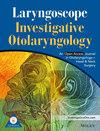Pediatric epistaxis is a common, often non-operative condition encountered by Otolaryngologists. The present study seeks to (1) describe our outcomes of epistaxis management, (2) estimate the associated healthcare burden, and (3) propose a clinical model to optimize care coordination with primary care and advanced practice providers.
Retrospective case series of pediatric patients treated outpatient for epistaxis by a single otolaryngologist from 2021 to 2022. The primary outcome after treatment with nasal lubricants was defined as (1) refractory epistaxis, (2) improvement, or (3) complete resolution. Cost data for office versus operative nasal cautery were analyzed.
In total, 122 patients were included for analysis. Over a follow-up duration of 20.5 months (IQR 8–36), 24.6% of patients experienced refractory epistaxis, 41.8% of patients found improvement, and 33.6% had complete resolution (n = 122). Refractory epistaxis was associated with a family history of coagulopathy (p = .007), daily epistaxis episodes (p = .043), and anemia (p <.001). Average direct hospital costs associated with nasal cautery were $187 for in-office cauterization and $2179 for intraoperative cauterization. Estimated patient/third party payors savings were $1617 and $15,412 for in-office and intraoperative procedures, respectively, and $541.59 for specialty office visits alone. The average charge for laboratory work-up was $576.
Approximately 75% of patients with epistaxis experienced improvement or resolution of symptoms with nasal lubrication alone. Refractory epistaxis was associated with a family history of coagulopathy, daily epistaxis episodes, and anemia. Otolaryngology visits for epistaxis were associated with a direct healthcare expense burden. Adaptation of our clinical model may mitigate these costs while improving patient care.
Level of Evidence: 4.


